The Story of Fenris and a Short Campaign Through Scythe
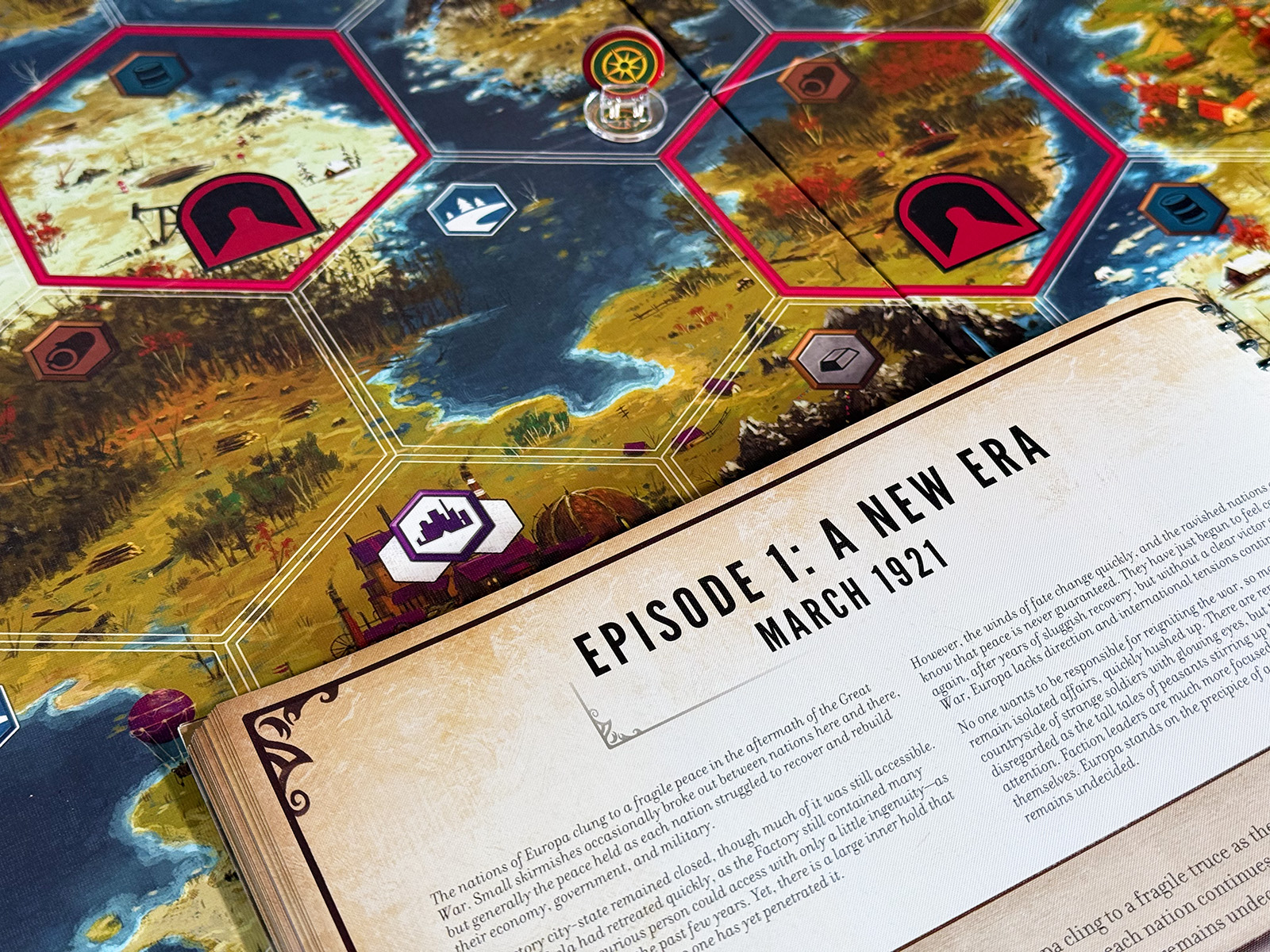
Play through a story across an alternate Europa in an episodic campaign filled with surprises and twists in Scythe.
As I settled into the solo mode for Scythe, it seemed like it was finally time to explore Scythe: The Rise of Fenris. In a rather humorous twist of my own, I picked this up when it first came out in 2018… And it’s been sitting on my shelf ever since! Well, it waited long enough, and I was eager to finally explore and unlock all of the modular content from the campaign!
Spoiler Alert
This campaign may have been around for many years, but note that there are spoilers ahead. If you haven’t played yet and don’t want to know what some of the unlocked content includes, feel free to skip this post and return later on. No worries!
Game Overview
Game Name: Scythe
Publication Year: 2016
Designer: Jamey Stegmaier
Artist: Jakub Rozalski
Publisher: Stonemaier Games
Solo Mode: Included in the Base Game
Factions spread out in a steampunk world of Europa where mechs and workers dot the landscape. With the campaign, each episode offers up a different scenario that might lead to some unexpected surprises available to use later on. The mechanics may be familiar, but claiming victory is not easy!
First Play
August 4, 2019
Complexity
3
Latest Play
August 3, 2025
Expansions
15
Setup Time
15 Minutes
Lifetime Plays
6
Play Time
1 Hour & 30 Minutes
High Score
83
Game Area
48" x 36"
Low Score
26
The Campaign Episodes
As I prepared to play through this 8-episode campaign, my hopes were very high! The initial backstory captivated my attention and I enjoyed feeling like I was immersed.
Now, maybe I went into this with a slightly skewed sort of perspective. Because what drew me to this was the whole idea of an ongoing story between the starting factions.
And not to get too far ahead, but factions may change over the course of the episodes. Which was odd to me.
Just as I started to feel like my faction had an interesting history with its neighbors, everything suddenly changed.
Akiko and Jiro
To make sure I didn’t leave out too much content, I included the expansion factions as I randomized the setup. To my delight, I drew the Togawa faction as my own. Cool!
It didn’t take too much effort to understand how the new trap tokens worked. There was a lot to appreciate with this design, and I liked how the home base was close to me!
Saxony turned out to be a nightmare neighbor, and even Nordic far, far away in the northern regions was an issue.
Fortunately, Rusviet found itself sandwiched in the middle and I didn’t have to spend all my efforts thwarting Olga!
Encounter Memories
Right from the start, I loved the encounters that seemed to mark each episode. Akiko moved in on these tokens more aggressively… Mostly because I just wanted the stories. Ha!
And this was a pretty hilarious sequence as she spotted a bear in the snow early on. Shortly after, I had a little laugh as Akiko came across what looked like the exact same bear!
I loved these choices and some of the humor. Let’s just say the bear scenes were very pleasant. But that pulley? Cut it!
This was where I felt like I was creating my story. Akiko and Jiro had their experiences, and I was a part of the journey.
Moving Into Peace
The results of the first episode play into a slightly branching storyline. Just to be obstinate and due to the trio of solo opponent factions voting for peace, Akiko voted for war.
It didn’t mean anything since it was a peaceful episode, but let the record show she wasn’t happy about Saxony taking over the Factory! That was a pretty deep-seated rivalry.
Yet I’ll mention again how things shifted rather drastically in the upcoming episodes. I was invested in the story…
But not my story. I had my own campaign log with all of my upgrades, yet they shifted over to new factions a few times.
Comparing “the” Story to “My” Story in Games
It might come up with single plays of some games, but stories tend to feel a lot deeper and involved in campaigns. I’m someone who enjoys coming up with narratives and really leaning into the fun of getting immersed in a game world. So much to discover and experience in different ways! But this was the perfect example of the story vs. my story.
They may sound similar, but I equate “the” story with the overall campaign narrative present in a game. What’s the setting? What’s going on in the general sense? When it comes to “my” story, I look at how I’m connected to “the” story. Who am I? What is my character or faction doing? What are the personal moments that make my experience unique?
Some games offer a different mix of these stories, and sometimes, they’re basically the same thing! But taking a step back, this explains why I didn’t mesh well with this campaign. The first key question never felt like I answered it: “Who am I?” I switched factions twice, playing as 3 different characters. Just not something for me, although I can appreciate the story!
Hanging Out with Jiro
I may not have a matching Calico Critter for all of the animals in the game, but Akiko found that Jiro transformed into this adorable monkey! She just hung around… Ha ha!
And this is another reason why I enjoy getting attached to characters or factions during a campaign. I make up these silly moments and scenes that stick with me to the end.
Perhaps my fault was in using a trio of solo opponents. I liked the challenge, but the bookkeeping was a lot of work.
The episodes also changed up a lot of rules and had me constantly adjusting to new strategies that didn’t work out.
A Farewell to Rivalries
It makes perfect sense why factions shift at certain points in the campaign, but it led to very unsatisfying story moments. For instance… Togawa went to a solo opponent.
Suddenly, my protagonist was an enemy and I had to shift over to learning a new faction. Again, it was an excellent part of the story, but left my story fractured and messy.
I suppose I could have simply left Togawa out of the options, but this still meant rivalries no longer made sense.
Rusviet disappeared, leaving a shroud of mystery that I enjoyed from a thematic standpoint. But it wasn’t enough.
Into the North
The highlight of each play remained on the encounters, although it was also nice when I could tie in the objectives!
All of these pieces of art felt like they went together in a fun way. Let’s just say that both objectives were completed during an episode that allowed multiple objectives. Cool!
However, as I neared the end of the sixth episode, I felt like I hit a wall. Gameplay wasn’t as fun and I went ahead and read the final pieces of the story without playing.
I liked the length of the campaign and thought the story was compelling. Just not an experience for me personally.
Return of Jiro!
My early conclusion to the campaign wasn’t all in vain… I still liked how the story ended and the way the campaign logs were used. There was no way I would have won!
What to do about the premature ending? Return to my first faction, of course. I stopped by to see what Akiko and Jiro were up to, when I heard a rather menacing rumble.
Jiro! Slow down! This hilarious monkey sped by on the popcorn tricycle, mowing down mechs left and right.
Popcorn, anyone?! This might be the secret to winning. Just hire Jiro to pedal (and peddle) through Europa. Ha ha!
Session Overview
Play Number: 5-10
Expansion 1: Scythe: Invaders from Afar
Expansion 2: Scythe: The Rise of Fenris
Main Accessory: Scythe: Board Extension
Solo Mode: Included in the Base Game
Play Details: Normal Difficulty Level
Outcome: 1 Win & 5 Losses
There were some very neat moments and a great story in the overall campaign, but I lost my sense of connection as the factions changed and rules constantly shifted. Still, nice to have experienced it and I have lots of modules to use!
%
10 Plays
Affordability
Price & Value
7
Functionality
Challenges & Mechanics
9
Originality
Design & Theme
7
Quality
Components & Rules
9
Reusability
Achievement & Enjoyment
9
Variability
Distinctness & Randomness
7
+ Pros (Positives)
- Decisions are interesting and strategic with the action selection system and different ways the rows may be linked.
- Racing to the central hex encourages tension, although the focus is less on constant battles and more on positioning.
- All of the components are excellent with unique mechs and characters to make each faction feel very unique.
- Some of the modules encountered during the campaign add more possibilities for variety in future base game plays.
- While the factions remain the same, rivalries and memories provide a cohesive story that one feels connected to.
- The main setting has a serious sense of looming war, yet many encounters provide a little bit of silly humor to enjoy.
– Cons (Negatives)
- Campaign episodes offer a great ongoing storyline, but the possibility of changing factions can feel disjointed.
- There are different rules to take into account with each episode, which require re-thinking strategies and choices.
- Managing the campaign logs, especially for multiple solo opponents, takes up a noticeable amount of time.
- Although the modules used in each episode can be fun, adding them to regular gameplay might not be desirable.
Victory Conditions
Score the Most Points
- Overall Goal Progress 100%
Goals and Milestones
Win at least 1 game at the easy difficulty level.
Win at least 1 game at the normal difficulty level.
Continue the Conversation
Have you played through the campaign for Scythe? Is there any moment that particularly stood out for you? I still appreciate the story that was weaved throughout the episodes, even though I stopped short and didn’t like the experience for myself. The game remains solid and I look forward to trying out some of the modules on their own in the future!
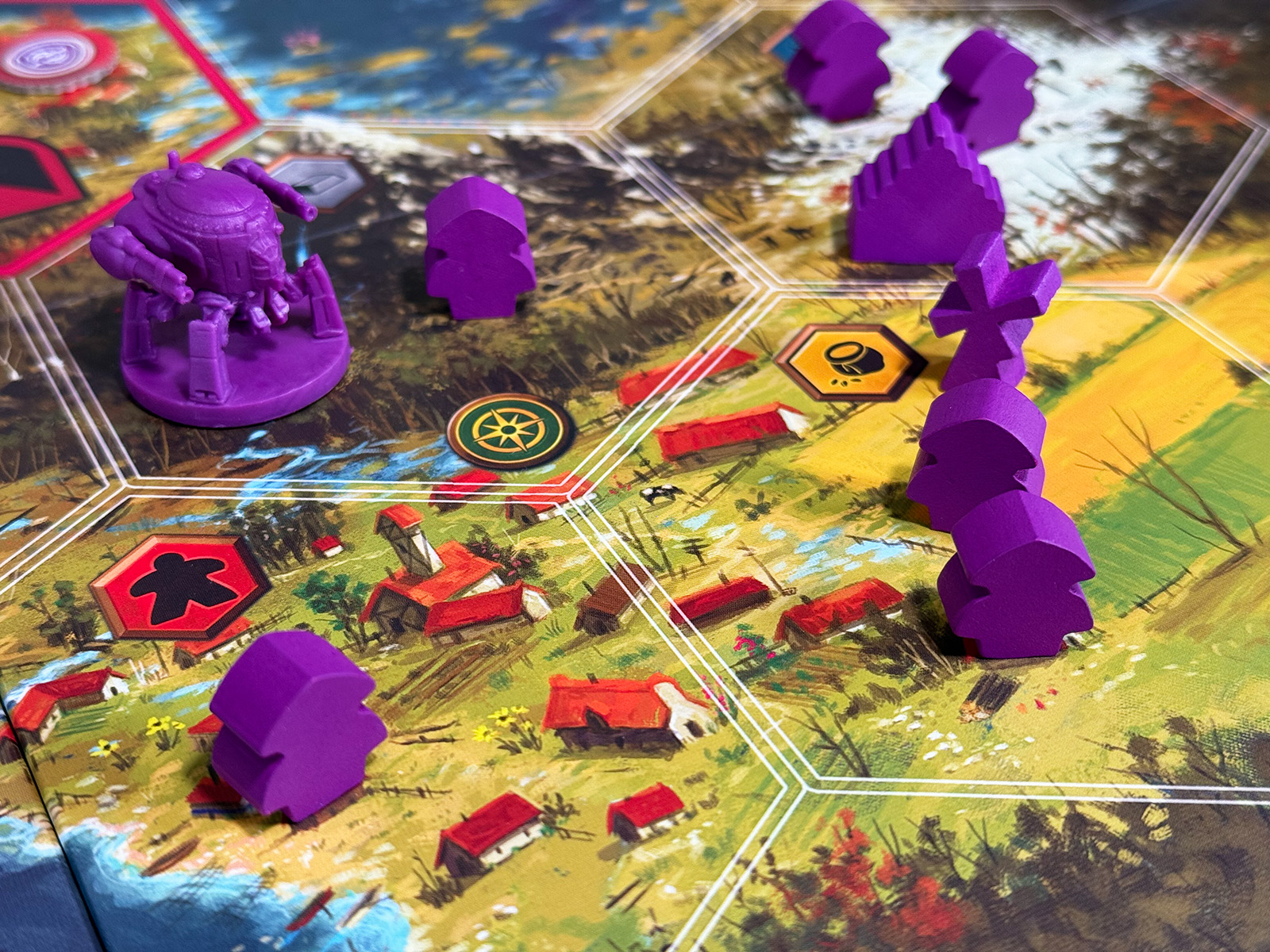


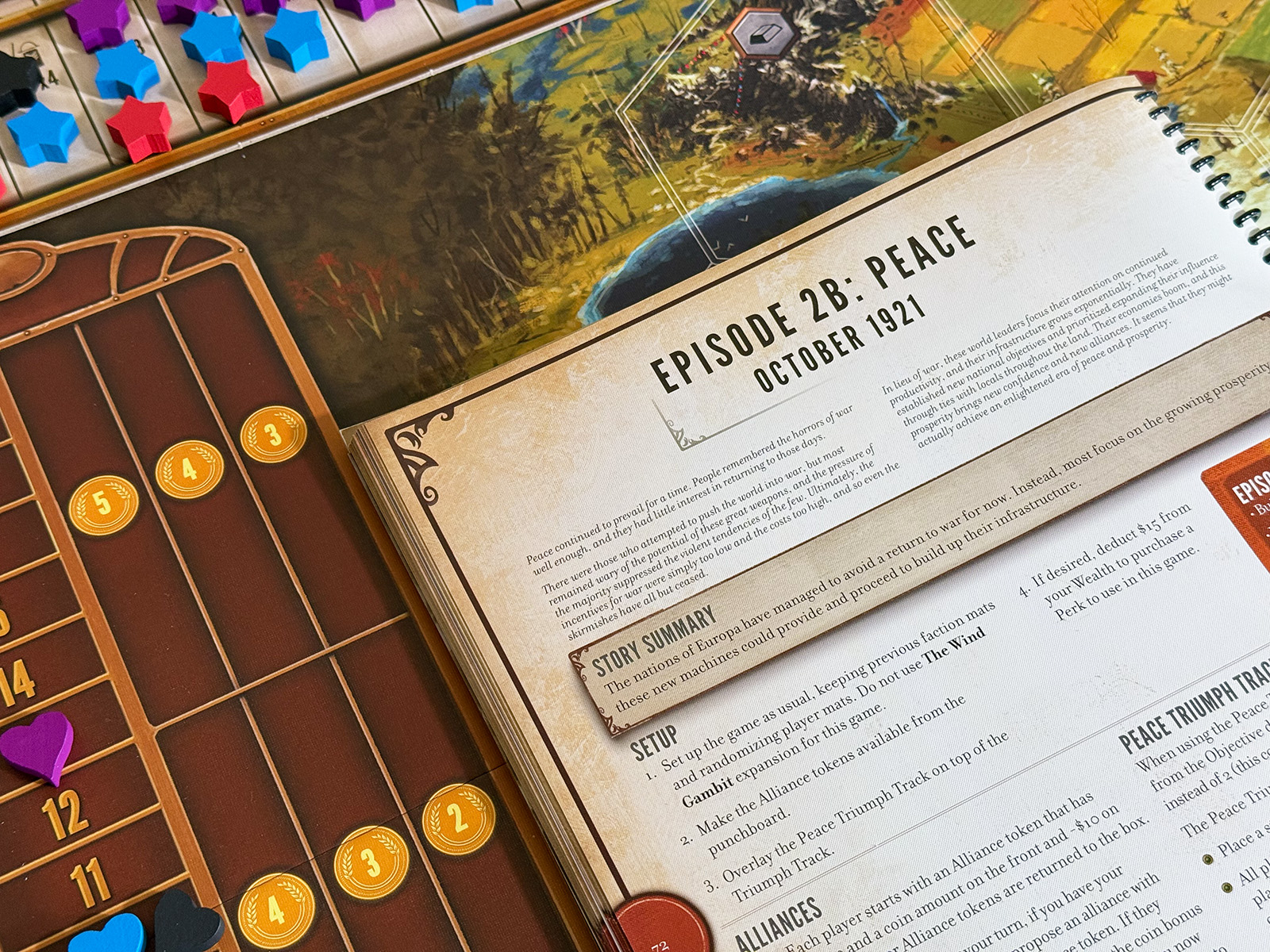
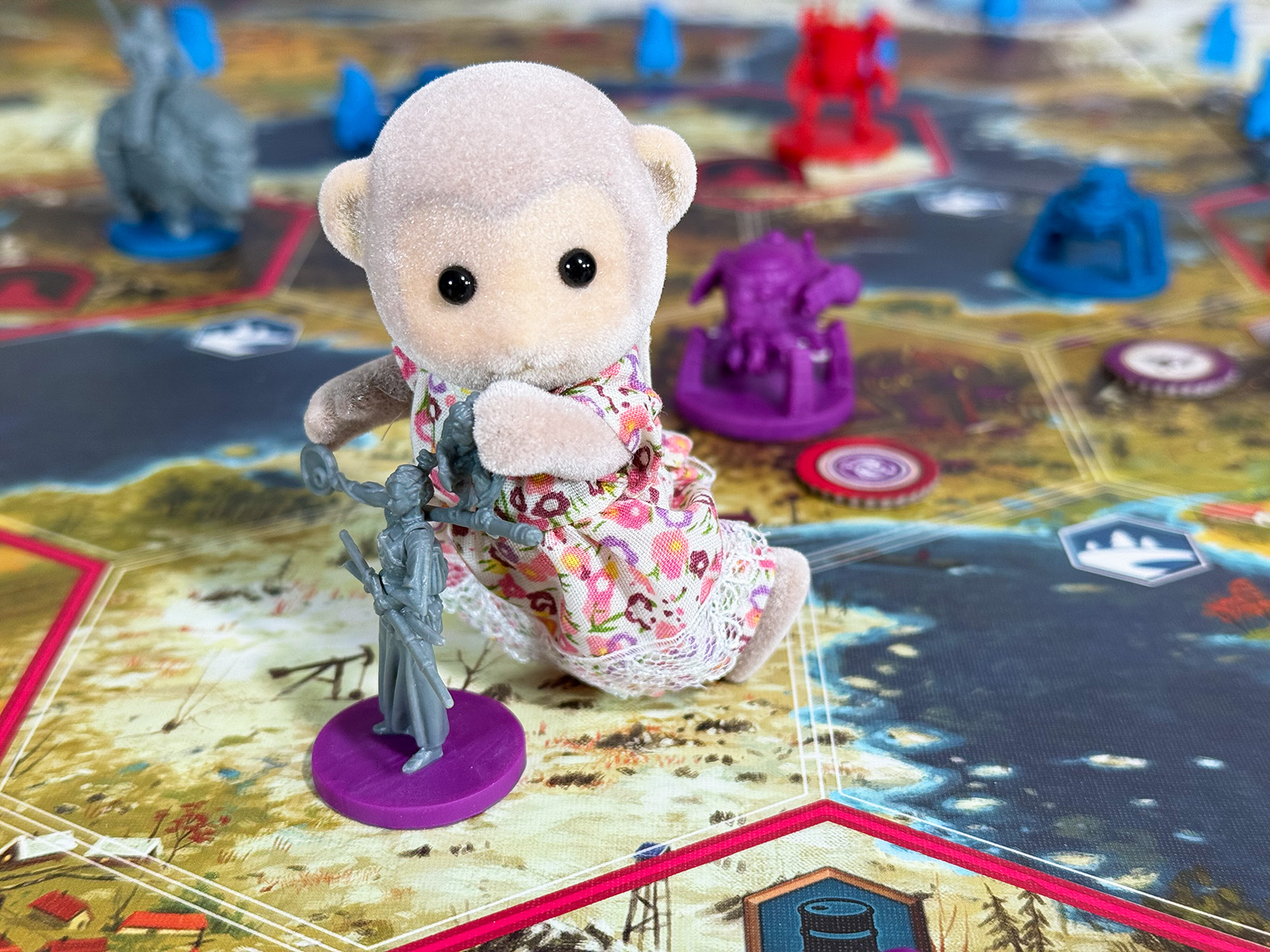
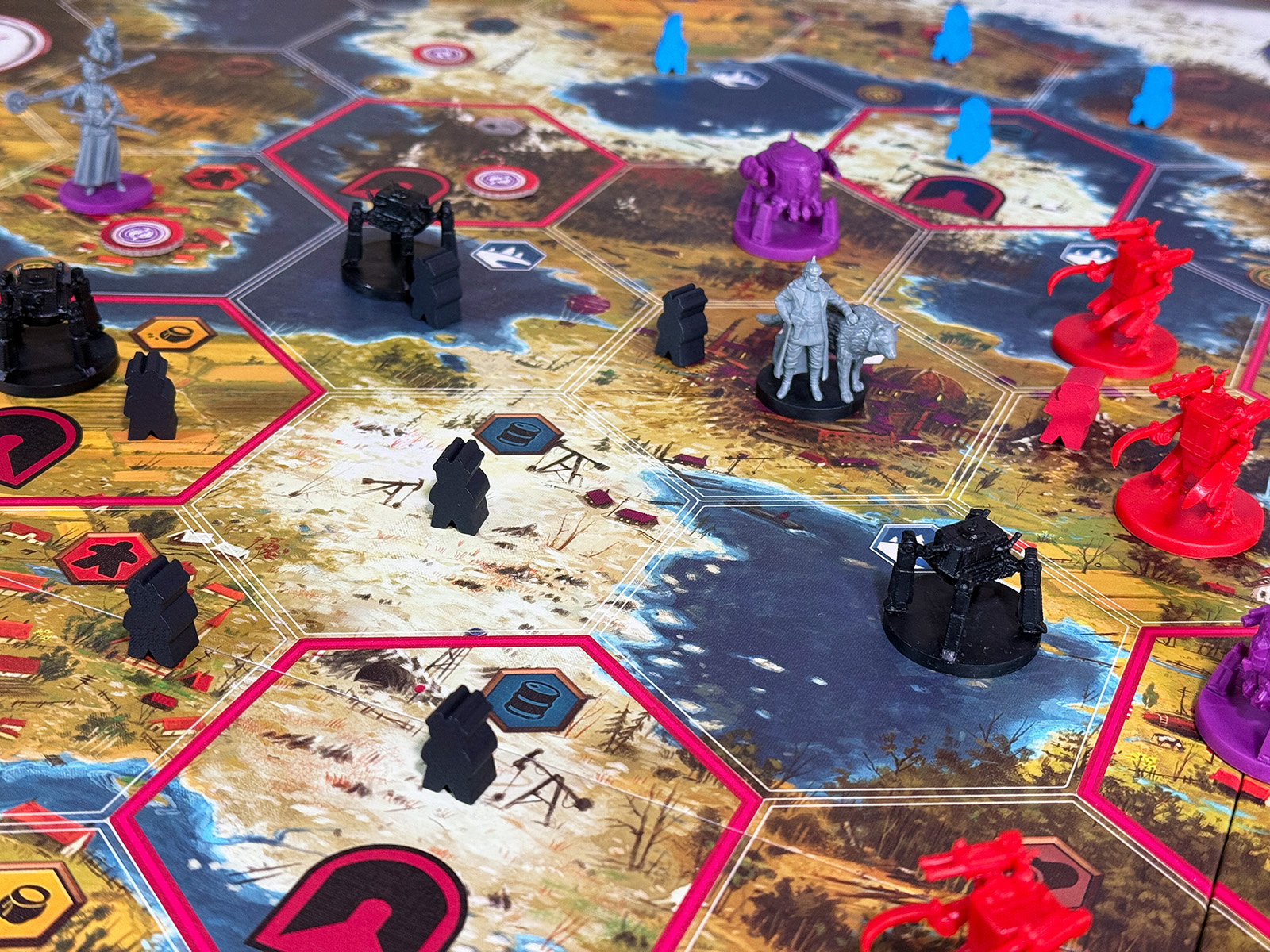
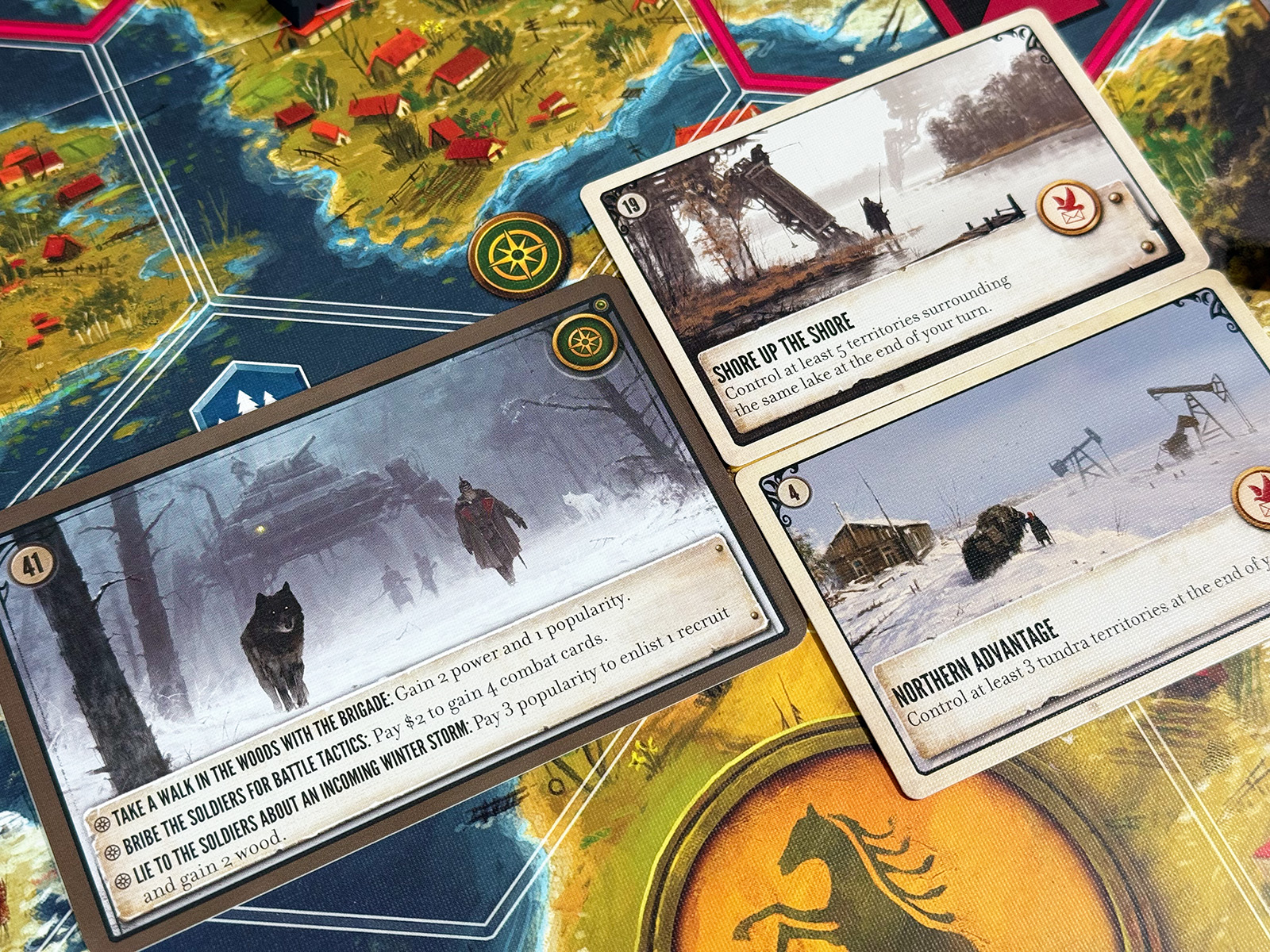
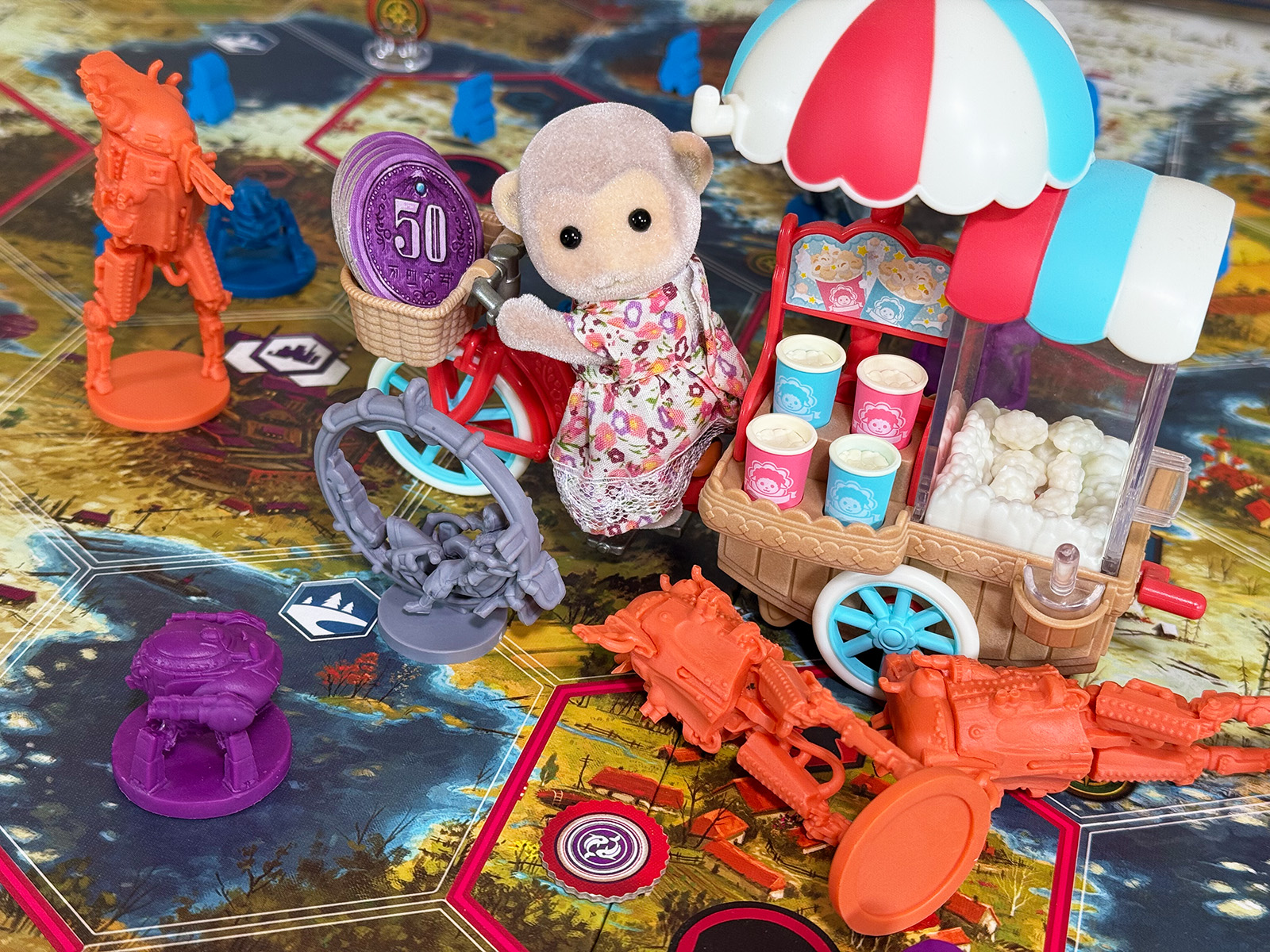
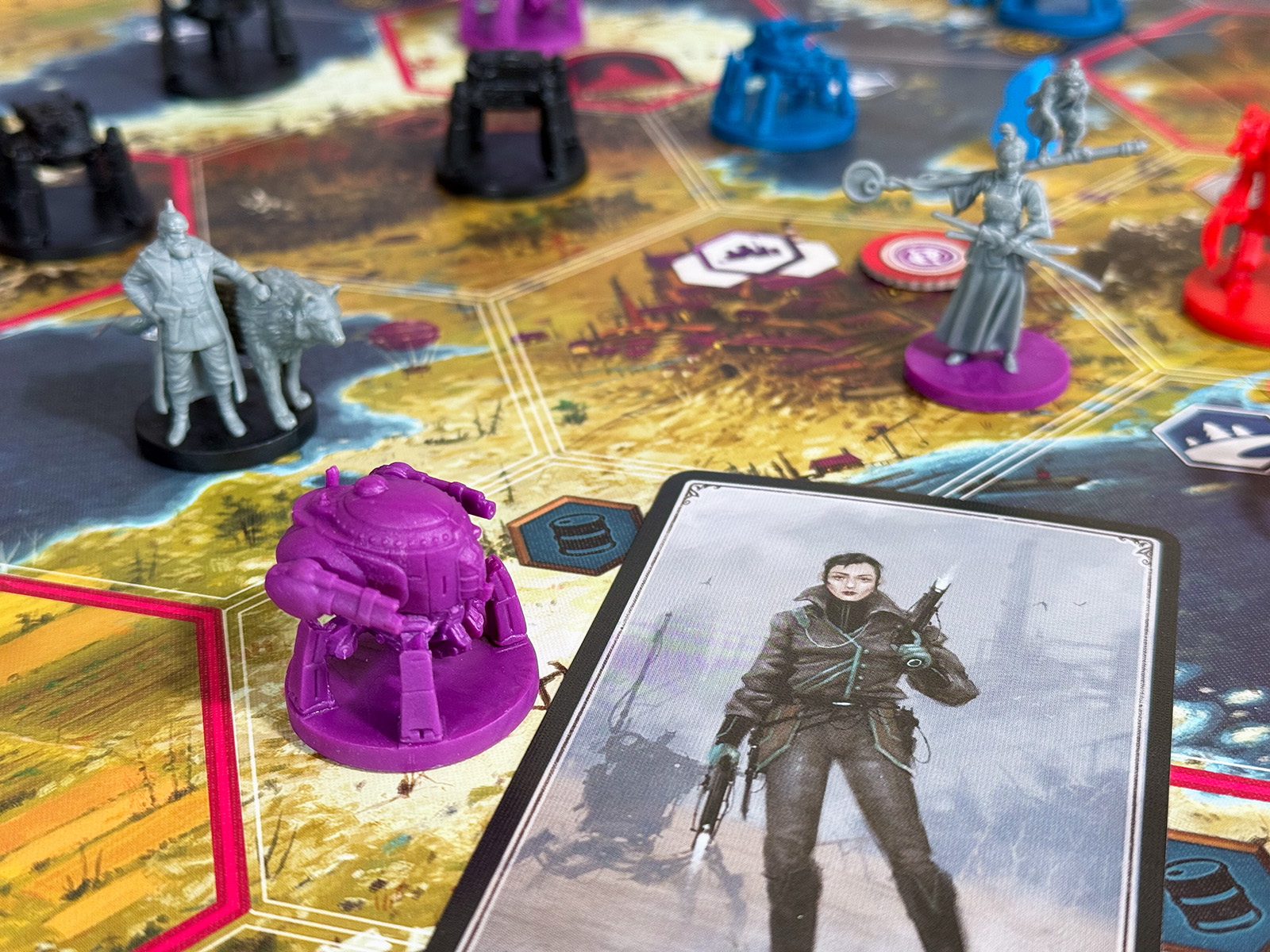
I too played the campaign solo (I don’t remember if I used one or two automas).
About the faction changes: when I was playing the campaign, I thought that the faction I was playing was the POV character for the chapter (much like what GRR Martin does for A Song of Ice and Fire). That helped me getting invested in the narrative.
That’s a great way to think about it to enjoy the narrative some more! Seems like a great tip for anyone starting out with it to understand that a single faction isn’t the main focus. I’ll keep that in mind in case it will help with other campaigns where the main character shifts or changes. Thanks for sharing!